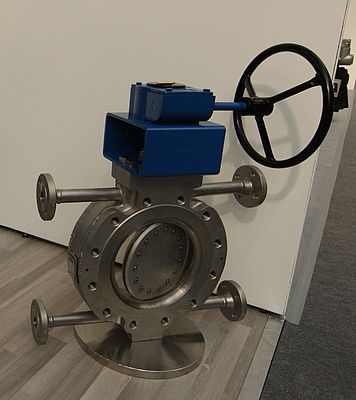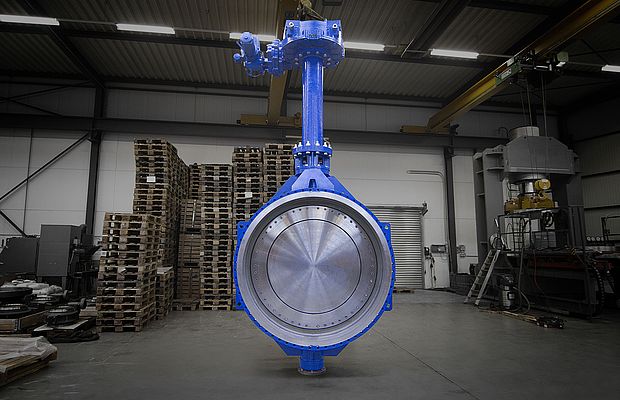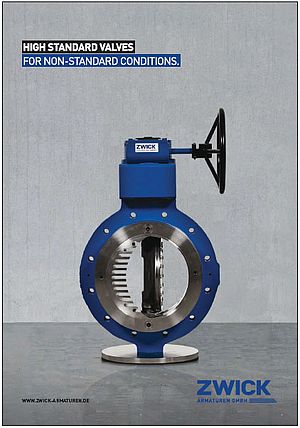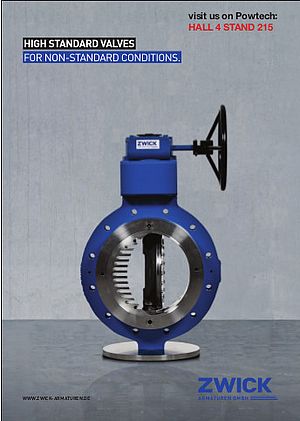Bearing failures are the highest root cause of failure in Triple Offset Butterfly Valves (TOV). This issue is directly attributed to the need to have metal bearings with very tight tolerances when accepting the shaft diameter.
Properly designed TOV’s (Triple Offset Butterfly Valves) are metal to metal torque seated type of valves. Therefore, very little shaft deflection can be tolerated in order to properly torque the seal ring into the seat. Additionally, properly designed TOV’s should have the bearings located as close as possible to the center line of the disc, which helps to deliver a rigid support of the shaft when torqueing into the seat.
In clean services, such as air or water, the chances of the bearings fouling are small. However, in the world of hundreds of petrochemical, power, and other applications there are many potential problems with bearing failures. Many of these problematic situations are obvious, such as Sulphur Tail Gas and Acid Gas services within refineries and gas processing plants. Sulphur in the gas state will have a phase change to a solid in temperatures below 115°C. If the gas phase sulphur is trapped in the bearing cavities and there is a drop in the temperature, the sulphur will become a solid. This causes bearing to shaft seizure, locking the disc in one position. When this situation occurs, the end user must apply a heat gun of some sort in order to unlock the valve. This procedure is not the best practice when operating a modern process facility.
Most TOV manufacturers offer a welded on steam jacket in order to use the steam’s latent heat to deliver heat to the bearing area. While this is good design practice, human error has negated this benefit when plant personnel simply turn off the steam to the jacket or unhook the connections to perform some maintenance and do not reconnect the steam to the fittings. In addition, every turnaround of a processing plant can be dangerous if media is still in the bearing cavity and that cavity has not the right temperature.
Other chemical applications such as butadiene and styrene have the same issues as described above, except when these chemicals become trapped and dormant it causes a phase change and popcorn, or polymerize, resulting in seizing of the bearings. Additional situations also attribute to foulings, such as simple pipe scale. Furthermore, during the start-up phase in new constructions when the pipes have not been properly flushed, debris can migrate into the bearing cavities. Improper designs can also add to bearing failures once in service. If a certain design has not taken into effect the thermal coefficients of both bearing material and the tolerances accompanied by the cross sectional thickness then the bearing could lockup during quick changing thermal conditions.
TOV manufacturers have been keenly aware of this potential problem and in the early 90’s some manufacturers introduced the Bearing Protection Ring, which has now become the industry standard. However, this feature has proven not to be the solution. A single ring of die-form graphoil installed into a groove in the ID of the bearing without a compressive load will flatten out and become quickly useless after a small amount of cycles under pressure. Graphoil has no memory. It might keep some of the heavy debris from entering the bearing cavity but will allow the process to enter. Other manufacturers offer a dual packing set with a lantern ring sandwiched between them, in addition to a flush port with grease fitting located on the bonnet to allow for flushing of the bearings. Certain manufacturers offer O-rings at the bottom of the bearing cavity. This design would be a good solution, but in the petro-chemical market Fire-Safe designs are mandatory, and an O-ring in the bearing cavity would not be considered Fire-Safe.
An example of efforts being made to find a solution to this issue is Zwick’s mechanical design that insures that both the ID and OD of the bearings are protected, and would also not violate the Fire-Safe design criteria. The design incorporates 3 rings of die-form graphoil packing ring at the very end of the bearing ID, and then 3 rings of the same on the OD, both are captured by machined edges and loaded by the packing load which keeps the graphoil rings from flattening out. This patented design is called the Sealed Bearing feature. Besides the fact that this design prevents any media from entering into the bearing cavity, the advantageous design to minimize shaft deflection of Zwick’s standard bearings can be kept in the special design.
Another plus is the fact that every standard Zwick valve can be upgraded with the Sealed Bearing design. Besides the protection of the bearing in this design, it functions as an additional seal to the packing and minimizes fugitive emissions to a minimum which makes this bearing system also very attractive for applications in ethylene oxide or propylene oxide. The patented Sealed Bearing has been proven for more than 12 years in many applications such as butadiene, styrene, sulphur, sulphur tail gas, EO, PO, high viscosity applications like thermal oil and acid gas.
Zwick’s TOV Series TRI-CON is available in sizes 2” to 72” and pressure classes from PN 10 – PN 160 or ASME Class 150-900. Zwick also designed the very successful derivatives of the Series TRI-CON, the metal seated check valve, TRI-CHECK, and the Double-Block and Bleed version, TRI-BLOCK in this time.





















